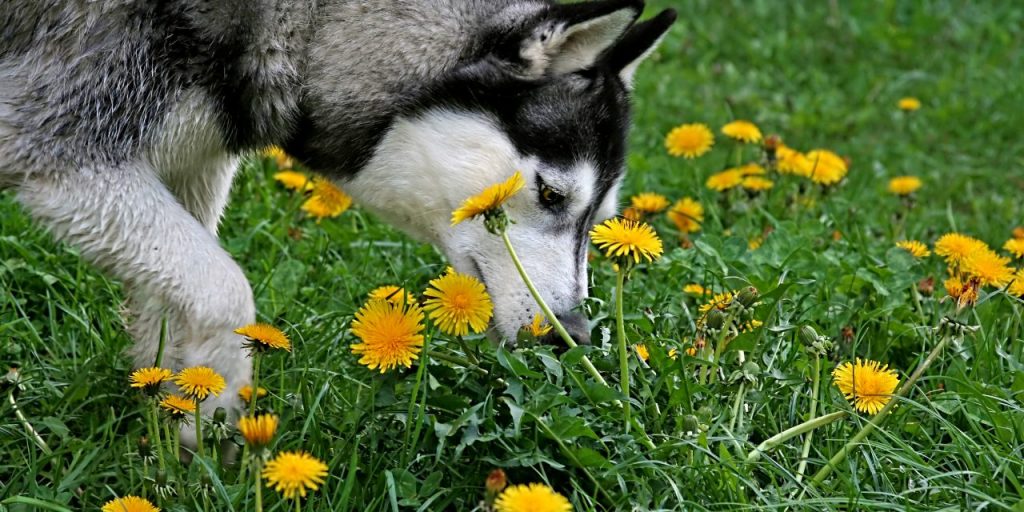The Influence of the Home Environment on Behavior During Pet Training

The Vital Role of Home Environment in Pet Training
Creating a successful pet training environment is multifaceted, extending beyond the binary of teaching commands. The home environment plays an essential role in shaping a pet’s behavior throughout the training process. Recognizing and understanding these influences can drastically enhance the effectiveness of various training methods, ensuring that the bond between pet and owner strengthens during the journey of learning.
Influential Factors in the Home Environment
Several factors contribute to the overall training atmosphere, impacting how pets perceive their surroundings and respond to training cues. Here are some key elements:
- Atmosphere: Is your home calm and quiet, or is it bustling with activity? A serene environment tends to invite focus, essential for effective training. For instance, if a puppy is learning simple commands like “sit” or “stay,” a tranquil space minimizes distractions, enhancing their ability to concentrate on the training session.
- Routine: Daily schedules are crucial in establishing predictability for your pet. A structured routine that includes set times for meals, play, and training can significantly improve a pet’s understanding of expected behaviors. For example, if a cat is fed at the same time each day, it can develop a sense of security and anticipation that can aid in litter box training.
- Socialization: The presence of multiple pets or family members introduces different dynamics into the training process. While multiple pets can provide beneficial social interactions, they can also distract one another during training sessions. It is essential to consider how these interactions play a role in shaping behaviors, as positive reinforcement strategies work best when a pet feels secure and is not competing for attention.
Impact of Home Environment on Training Outcomes
Research highlights a compelling trend: pets trained in a supportive and consistent home setting respond far more positively to commands. For instance, a dog raised in a calm, interactive household is likely to be more responsive to training than one in a chaotic environment. This is not simply anecdotal; studies suggest that pets thrive on routine and respond positively to consistent behavioral cues.
By evaluating the influences of the home environment, pet owners can tailor their training strategies. It allows for adaptable techniques that can accommodate the specific needs of both the pet and the owner. This tailored approach not only enhances training effectiveness but also deepens the bond between pet and owner, essential for long-term companionship.
Moving Forward
As we delve deeper into the subject of pet training, we will explore various environmental factors impacting training outcomes. Expect to uncover actionable insights aimed at creating an ideal training atmosphere that caters to your pet’s unique personality and needs. Whether you’re training a puppy, a kitten, or even an older rescue pet, understanding your home environment’s impact will pave the way for a more enriching training experience.

DISCOVER MORE: Click here to explore heartwarming tales of resilience
Understanding the Key Elements of a Supportive Home Environment
To fully grasp the significance of the home environment in shaping behavior during pet training, it is essential to break down the key elements that contribute to a nurturing atmosphere. An effective training environment is not just a physical space; it is influenced by the emotional atmosphere that surrounds both the pet and the owner. This understanding can transform the training journey into a more productive and enjoyable experience.
Physical Space and Its Impact
The layout and organization of your home can play a pivotal role in the success of your pet training efforts. A chaotic environment, filled with clutter and distractions, can overwhelm a pet, making them less likely to focus on training commands. For example, if you are teaching your dog to fetch in a cluttered living room, the presence of toys and furniture can hinder their ability to concentrate. In contrast, creating a dedicated training space that is free from disruptions can greatly enhance a pet’s willingness to engage and learn.
Emotional Climate: The Role of Owner Attitude
The emotional environment created by the pet owner is equally important. Pets are highly attuned to their owner’s mood and stress levels. If an owner exhibits frustration or impatience during training sessions, it can lead to anxiety in the pet. A calm, positive attitude fosters a sense of safety and encourages the pet to try new behaviors without fear of reprimand. This is especially crucial during the early stages of training when pets are still acclimating to the commands being taught. Consistently offering treats and praise reinforces a positive emotional climate, making the training process enjoyable.
Social Interactions: Impact on Training Dynamics
The way family members and existing pets interact with each other influences a pet’s behavior during training. For instance, the presence of children can both positively and negatively impact training outcomes; children often provide an interactive learning experience, but their unpredictable movements might also distract the pet. Here are some ways social interactions can shape your pet’s training experience:
- Positive Reinforcement: Family members can participate in training by consistently rewarding correct behaviors. This collective approach reinforces the importance of learning.
- Modeling Behaviors: If multiple pets are present, they can model desirable behaviors for each other, making training more effective. However, it’s crucial to manage these interactions to minimize distractions.
- Attention Competition: When multiple pets seek attention during training, it can lead to competition, causing stress or confusion. Separating pets during training sessions can alleviate this issue, allowing for more focused learning.
Understanding these layers of influence within the home environment empowers pet owners to create training sessions that cater to their pet’s unique needs. By recognizing the interplay between physical space, emotional climate, and social dynamics, owners can cultivate an environment conducive to behavioral training and development. This preparation not only enhances the effectiveness of training methods but also strengthens the bond between the pet and the owner, laying the foundation for a lasting relationship built on trust and respect.
| Environment Factors | Influential Outcomes |
|---|---|
| Space Availability | More space allows pets to engage in natural behaviors and exercise, reducing anxiety. |
| Noise Levels | A quieter environment fosters concentration during training, leading to better retention of commands. |
| Visual Stimuli | Calm visuals can minimize distractions, enhancing focus and responsiveness in pets. |
| Owner’s Emotional State | A relaxed owner significantly impacts a pet’s obedience and willingness to learn. |
The relationship between a pet’s training success and its home environment is profound. Various factors including space availability, noise levels, visual stimuli, and the owner’s emotional state play critical roles. A spacious environment, for example, encourages pets to explore and engage in natural behaviors, which helps in reducing anxiety—an essential factor during training sessions.Moreover, a quieter household allows pets to concentrate better while learning new commands, thus improving their retention of information. The visual environment also contributes; calming visuals can minimize distractions, making pets more responsive. Furthermore, an owner’s emotional state significantly affects their pets. A relaxed owner can lead to a more obedient and eager-to-learn pet, highlighting the importance of a holistic approach to training that encompasses the entire home environment. Understanding these elements can greatly enhance training results, inspiring owners to create an ideal setting for their pets.
LEARN MORE: Click here to discover the benefits of probiotics
Establishing Structure and Routine for Effective Training
A structured environment is fundamental in the realm of pet training. Routine not only provides a sense of security for pets but also facilitates quicker learning. When pets are aware of consistent training times, places, and methods, they are more likely to engage and respond to commands effectively. The predictability of a training schedule minimizes anxiety and allows pets to mentally prepare for each session. Here are some practical ways to instill structure and routine in your training:
Consistency is Key
Consistency in commands, timing, and rewards is crucial for effective pet training. An owner should avoid switching between different words for the same command or offering treats sporadically. For example, if you teach your dog to “sit” using a particular tone and command, it is essential to use the same approach consistently. This reinforcement solidifies learning pathways in the pet’s brain, helping them associate specific behaviors with outcomes. Research has shown that animals thrive in environments where rules and feedback systems remain unchanging, enabling them to learn more effectively.
Incorporating Environmental Enrichment
Beyond physical and emotional components, the availability of mental stimulation can significantly affect behavior during pet training. Enrichment can come in the form of interactive toys, puzzle games, and varied training exercises that challenge a pet’s intellect and instincts. Incorporating these elements into training sessions not only enhances engagement but also encourages the pet to think critically. According to a study published in the Journal of Veterinary Behavior, pets that received adequate mental stimulation during training showed a significantly higher success rate in learning new commands compared to those that did not.
Safe Spaces: Retreat and Regulation
Creating designated safe spaces within the home can positively influence a pet’s emotional well-being, thus enhancing training outcomes. Just as children need a quiet corner to retreat to when feeling overwhelmed, pets also benefit from having a space where they feel secure. This area should be calm and possibly furnished with familiar items like blankets or favorite toys. Allowing pets to retreat to this safe space can help them self-regulate, manage stress, and return to training sessions more focused and eager to learn.
Adjusting Training to Individual Needs
No two pets are alike, and the home environment often accommodates their unique quirks and personality traits. Observing the pet’s behavior during training can yield insights into what methods resonate most effectively. For example, if a particular training session creates anxiety or confusion, it might be prudent to adjust the approach. Consider breaking commands down into smaller, manageable tasks and monitor the pet’s responses closely. By doing so, the owner can create a personalized training regime that aligns with the pet’s capabilities, leading to quicker mastery of commands.
The influence of the home environment on behavior during pet training is multifaceted, encompassing structure, consistency, mental stimulation, and personalized care. Each element interweaves to create an experience that not only fosters learning but strengthens the bond between pet and owner. By recognizing and optimizing these various factors within the home, pet owners can ensure a fruitful training journey that lays the groundwork for responsible pet ownership and harmonious living.
DISCOVER MORE: Click here for effective strategies
Conclusion: Shaping Behavior Through a Positive Home Environment
In the endeavor of pet training, the home environment emerges as a powerful catalyst influencing behavioral outcomes. A thoughtfully structured and consistent training approach, complemented by ample mental enrichment, creates an ideal atmosphere for learning and growth. The insights gathered throughout this article emphasize that pets thrive when they feel secure and understood, underscoring the importance of recognizing individual personalities and needs.
By fostering an environment filled with routine and predictability, owners can reduce anxiety levels in their pets, allowing for a more focused and responsive training experience. Additionally, incorporating enriching activities not only captures pets’ attention but also cultivates their intellectual agility, which is essential for mastering new commands. Moreover, establishing safe spaces for retreat acts as an effective stress management tool, ensuring pets can self-regulate and maintain balance during training sessions.
Ultimately, the influence of the home environment extends beyond mere training tactics—it shapes the relationship between pet and owner. A commitment to building a supportive space paves the way for deeper emotional connections, leading to a more harmonious coexistence. As pet owners embark on this training journey, they are encouraged to observe, adapt, and grow alongside their pets, embracing the unique learning paths that emerge from each interaction. The results not only promise well-behaved animals but also enriched lives filled with mutual respect and understanding.



